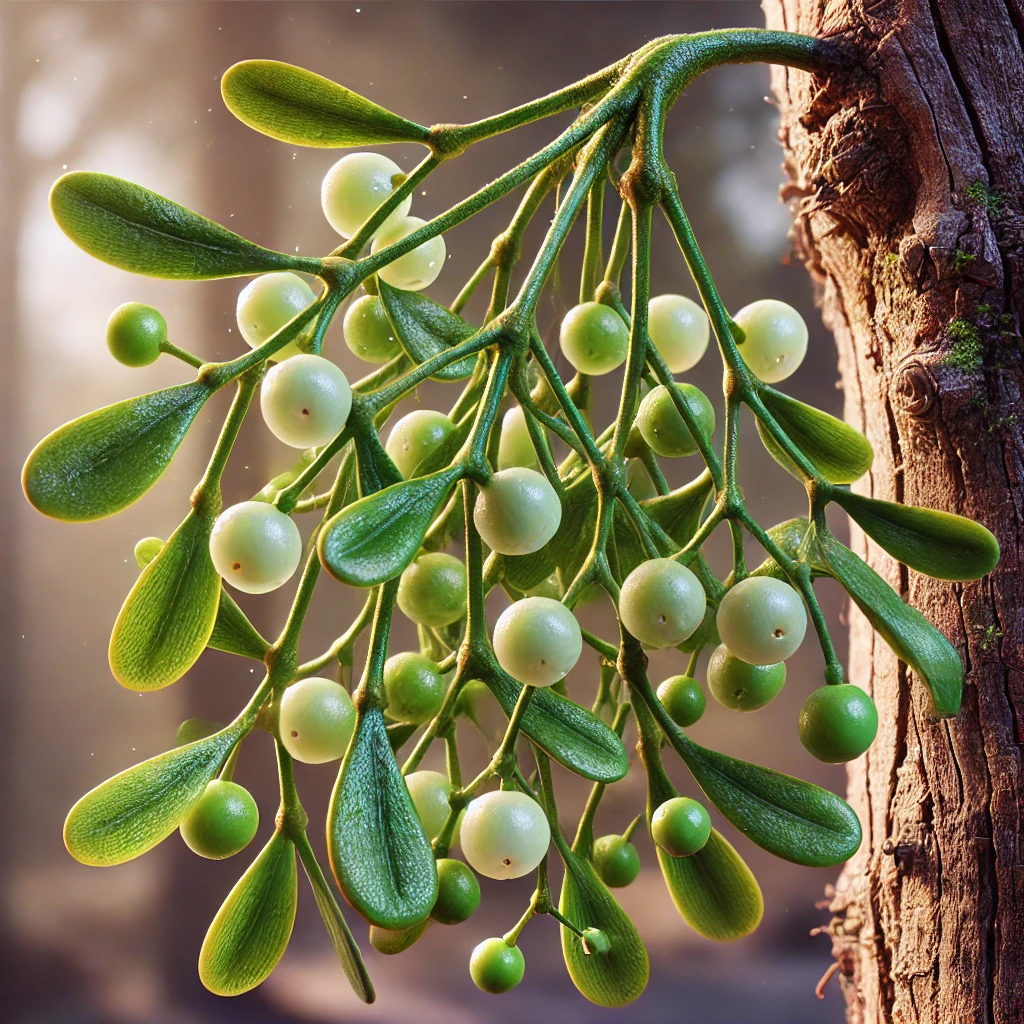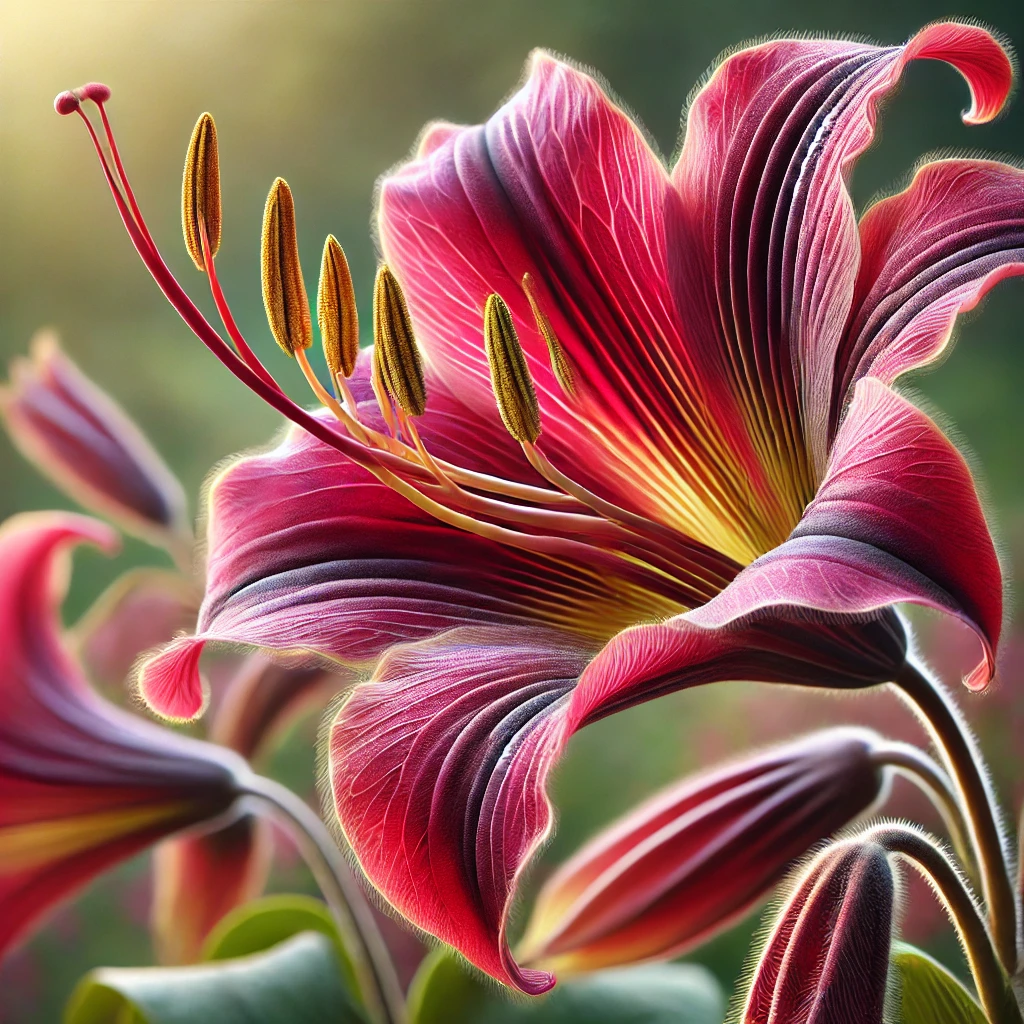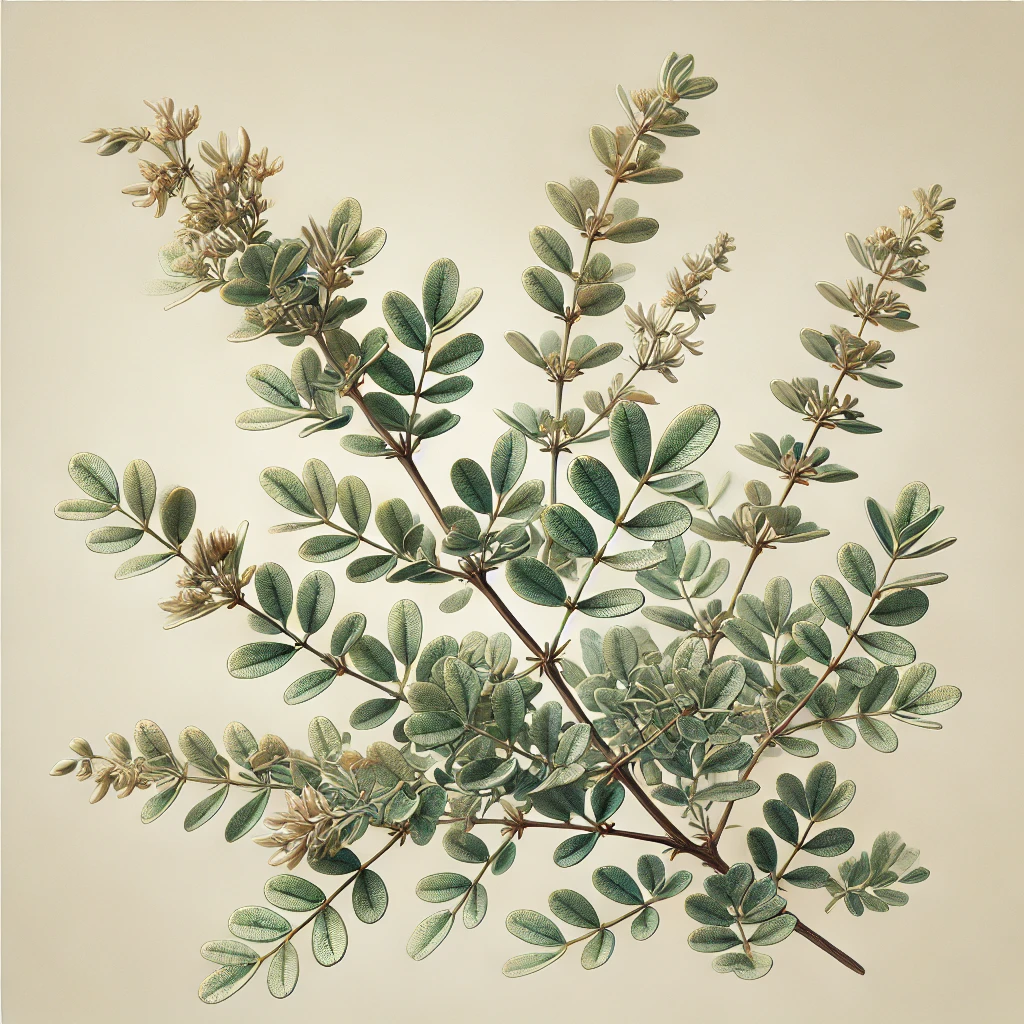A low, dioecious tree with a broad crown. The leaves are pinnately compound, with three or more large, elliptical leaflets. The flowers are inconspicuous, unisexual. The fruit is a dry drupe. The seed is known as the edible nut — pistachio with a green kernel. Galls, caused by aphids, develop on the leaves. These galls grow in groups of 1–3, in the form of hollow, bubble-like, pear-shaped formations (0.5–3 cm in length) of a pinkish color.
Pistachio trees form groves on the slopes of Central Asia; they are also widely cultivated.
The galls, called buzguncha, contain 30–45% tannin and resin and have been proposed for use as an astringent. The leaves contain 13–17% tannins.
PISTACIA MUTICA F. et M. — forms rare pistachio groves in the Caucasus and Crimea. The leaves contain up to 20% tannin, the drupes are inedible and yield 60% fatty oil; the trunk produces resin and up to 25% essential oil containing pinene.
COTINUS COGGYGRIA SCOP. — COTINUS COGGYGRIA SCOP.
A branching shrub, sometimes a small tree, with yellowish wood. The leaves are rounded or elliptical, glabrous, with the petiole and main veins usually red-violet. The inflorescences are large, spreading panicles that develop at the branch tips. The flowers are inconspicuous, greenish-white, bisexual and unisexual on the same plant. The fruits are small drupes with a drying pericarp. After flowering, the flower stalks of the numerous sterile flowers elongate significantly and develop long, orange-red, outward-pointing, tangled, hairy threads, giving the shrub a very decorative appearance. It blooms in June–July and fruits in August–September.
It grows in the mountains on rocky slopes, chalk outcrops, among shrubs, and in sparse forests throughout the Caucasus, Crimea, and parts of southern Ukraine. It is now widely cultivated in protective forestry as a leading species of the second tier.
The leaves contain 12–20% tannin, 3–5% free gallic acid, and are used for tannin extraction. The leaves and wood also contain flavonol glycosides such as myricetin and fisetin, used as yellow dyes. There is about 0.1–0.2% essential oil with a pleasant scent, used in perfumery.
RHUS CORIARIA L. — RHUS CORIARIA L.
A small, sparsely branched shrub, sometimes a small tree. Unlike Cotinus, the leaves are pinnately compound, with 4–8 pairs of sessile, ovate leaflets, and a winged petiole. The inflorescence is a dense panicle, but it does not form the orange threads of Cotinus. The fruits are small, spherical, red drupes, densely covered with reddish-brown glandular hairs. They are sour and used as a spice in food. It blooms in June–July and fruits in September–October. It grows in the mountains of Crimea, the Caucasus, and Turkmenistan.
The leaves contain about 30% tannins, including up to 15% tannin, and are a source of tannin extraction.
RHAMNACEAE FAMILY — RHAMNACEAE FAMILY
Trees or shrubs, often with thorns. The leaves are simple. The flowers are small, usually collected in axillary cymes or clusters of 4–5 parts. The calyx is 4–5-lobed; the petals are 4–5, with 4–5 stamens. The ovary is superior, 2–4-celled. The fruit is a fleshy drupe or a dry, indehiscent fruit.
Several species contain anthraquinone derivatives, especially in the bark and fruits, sometimes in the leaves. Tannins are found in the bark in small amounts; there are flavonoids and resinous substances. The fruits also contain sugars, organic acids, and coloring compounds. Alkaloids seem to be absent.
The family consists of 5 genera, with 2 being used: Rhamnus and Frangula.










